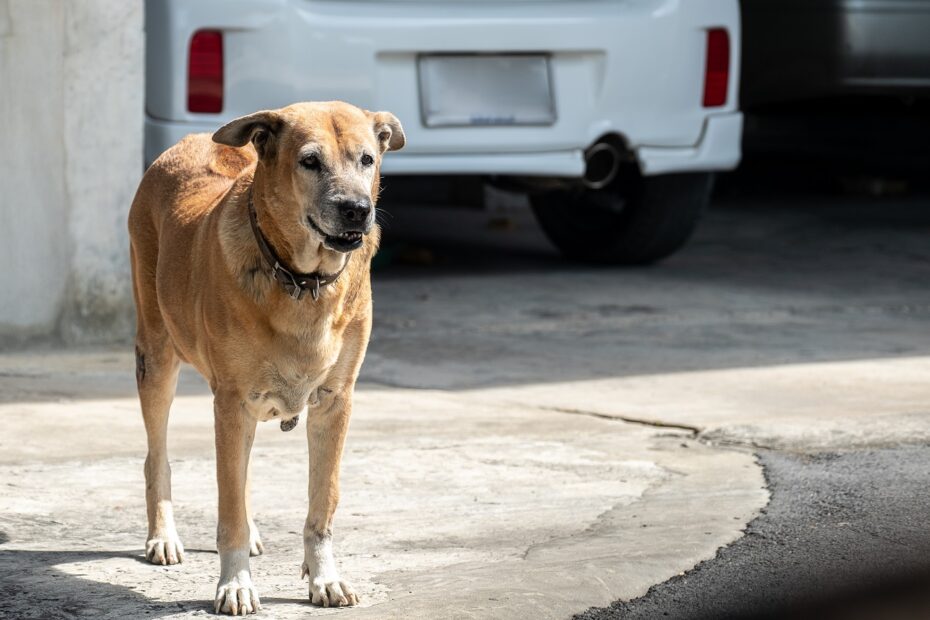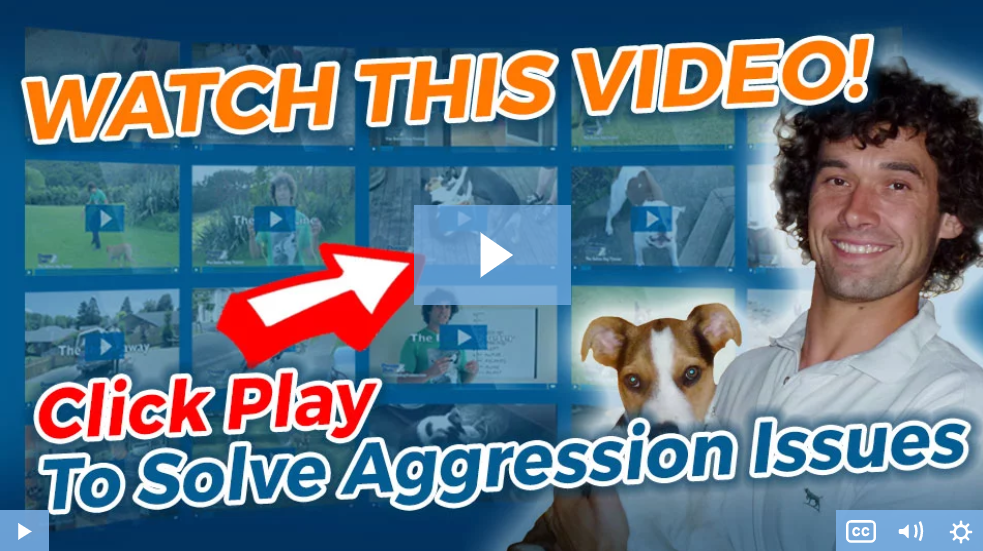If you want to know how to stop a dog from growling at strangers, then this is the most important page you’re ever going to read.
Dogs’ growl, that’s a fact. And while every dog owner will have witnessed their dog growl from time to time at one thing or another. It can still be a little puzzling as to why they exhibit this unusual behavior.
Worst still, it can often be directed at different people, in different places, and often for no apparent reason. So figuring out the pattern behind the growling can often leave you scratching your head, wondering what to do next.
But fret not because although your dog’s growling may be a little unpredictable at times, it’s by no means impossible to manage given the right advice.
Now, before we get into some of the potential reasons for your dog’s unwanted growling. It’s first important to highlight the difference between both aggressive and playful growling.
Because if you can distinguish between the two, your chances of nipping this problem in the bud increase tenfold.
So to give you a little insight, playful growling tends to be a lot shorter in duration. And can usually be identified by a much higher pitch.
You’ll also notice your dog’s body language is generally looser and relax and can be accompanied by other excitable traits like a wagging tail.
On the flip side, a dog that’s displaying signs of aggression can be determined by both a low-pitched growl with a much longer duration.
Their body will be a lot more rigid, and their eyes will likely be fixed on the target.
If this is the growl you’re seeing, then it needs to be addressed ASAP before things take a turn for the worst.
So what can you do?
Well, preventing your dog from growling is one thing. But getting them to permanently change their behavior and instinctively remain in control of their emotions when they’re around strangers is quite another.
This is why before you do anything else, I’d highly recommend checking out the 5 emotional control exercises from Dan Abdelnoor (aka Doggy Dan) over at The Online Dog Trainer. (see video below)
To put it bluntly, if you watch the video, take the necessary actions to impliment the exercises, and more importantly, use them consistently. You should start to see a massive improvement in your dog’s behavior for the better.
Anyway, here’s the link to take a look: 5 Emotional Control Exercises To Quickly & Permanently Stop Your Dog Scary, Aggressive Growling Habit…
(video will open in a new window)
Why Do Dogs Growl?
Dogs make lots of instinctive noises that aren’t easily understood by humans, which is why we can often misinterpret them as being an indication of a particular behavior. When in fact, it’s a response to something totally different.
Like barking, growling is a noise that dogs make to indicate how they’re responding to a certain situation.
However, growling is more commonly associated with aggression or defensiveness, two inherent traits in all breeds of dogs.
Again, playful growling is distinguished by the high-pitched noises your dog is making during play and will be accompanied by playful body language.
It’s important to reaffirm the fact that this type of growl is harmless, and you most likely hear it when your dog is excited about going out for a walk or preparing to eat a meal.
It’s friendly, good-natured, and is clearly not a warning to other dogs or any strangers that you encounter.
An aggressive growl, on the other hand, is a major cause for concern.
I know we’ve briefly touched on this already, but it’s critical you keep a close eye on your dog and look out for any of the following:
- A deep, long aggressive growl
- Fixed stare and stiff body language
- Bared teeth
If you spot any of the above, then it’s a clear sign that your dog is uncomfortable with the situation.
They might be growling because they feel threatened, to show dominance, or they’re even growling as a way to protect something or someone.
For some dogs, this growl is a clear indication that they’re about to lash out or attack. And is something you need to address immediately before it becomes a significant issue.
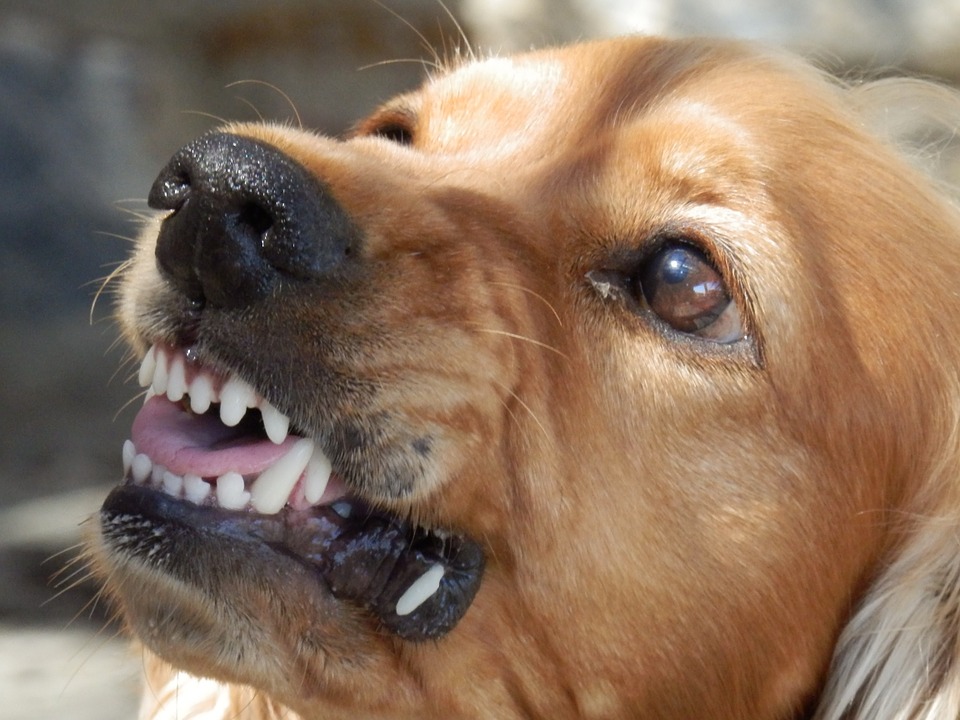
Should I Be Worried If My Dog Growls At Strangers?
Contrary to what you might believe, you don’t need to stop your dog from growling full stop. And neither should you try.
The trick, however, is to eliminate the wrong types of growl so you can have peace of mind that your dog won’t randomly start attacking innocent strangers.
Again, this is where observation comes in handy because the last thing you want is to discourage playful (non-aggressive) growling because it’s ultimately what makes up their own unique personality.
What’s more, growling is a vital part of your dog’s defensive instincts.
For instance, in the unlikely event that someone tries to break into your home or threatens you or your family. Your dog’s threatening growl may be the only thing protecting you from any potential danger.
It’s also a way that dogs warn others that they’re unhappy with something and can be an important sign that something needs to change.
Perhaps you’re invading their personal space, or maybe they’re trying to tell you that they’re sick.
With these things considered, growling in itself isn’t a negative trait in your dog. It’s simply one of the many ways they communicate.
However, if your dog always growls at strangers for no apparent reason, this is something that needs addressing.
Even if it doesn’t necessarily lead to aggression, it can still be frustrating having to constantly explain your dog’s actions to others.
So regardless of your dogs’ intentions, it’s still in your best interests if you try and discourage this behavior before it becomes a persistent habit.
Remember those 5 emotional control exercises I touched on earlier?
This is where they come to the rescue when it comes to reducing your dog’s unwanted growling.
Because not only are they great at dialing down your dog’s emotion. They’ll also teach your dog to become highly responsive and remain in control in any situation that triggers it.
So learn the exercises, impliment them, and you should see a positive change in your dog’s behavior in no time at all.
Anyway…
Now that we’ve touched on a few reasons why your dog growls. Let’s talk about some practical things you can do to bring unwanted growling to an abrupt end.
Related Post: How To Calm An Aggressive Dog – Simple Tips For Aggressive Behavior
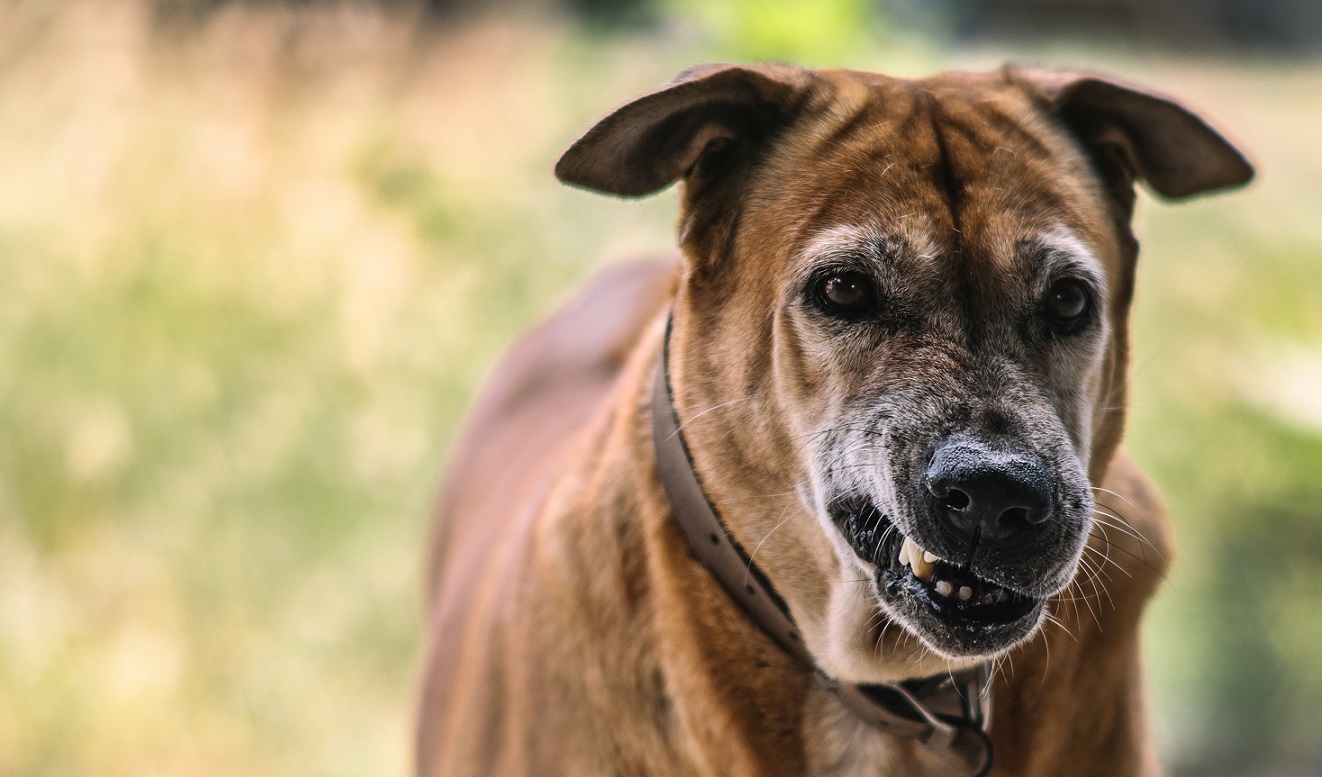
How To Stop A Dog From Growling At Strangers
As previously discussed, not all growling is bad. Still, you should definitely take action if it’s directed at strangers for no apparent reason.
This goes double if your dog is displaying clear signs of aggression.
So first things first…
Establish the root cause of the issue
As is the case with any behavioral issue, understand the root cause is a must if you want any chance at solving it.
So take a few minutes to think about the following:
…Does your dog growl at every stranger you meet? Or is it only in certain situations?
For instance:
- Do they growl at strangers that come to the house?
- Is it strangers with other dogs?
- Random joggers or people who are out exercising?
…Does your dog tend to growl at particular times of the day or in specific places?
…Do you notice your dog’s growling becoming worse when there are more people around? Or is it just as bad with individuals?
You really need to try and identify a pattern here, as it will save you a huge amount of time and frustration coming up with an effective solution to combat it.
For example, if your dog only tends to growl at joggers out in the park, it could be they feel threatened by a fast-moving target. However, it could also just mean they’re excited and want to play chase.
Again, this will all depend on the type of growl and the signals they’re giving off.
But if you can learn exactly what triggers your dog. It becomes easier to try and avoid those situations until you can get their behavior under control.
Socialize your dog
More often than not, obsessive growling can simply come from a lack of socialization.
Dogs that are unfamiliar with other people or dogs will often display some form of uncertainty in one way or another.
This can often manifest itself as barking, shaking, hiding, and yes, even growling if left unchecked.
The best way to counter this is to simply create more opportunities for your dog to socialize on a regular basis.
Because by encouraging them to experience as many day-to-day situations as possible, you’re ultimately setting them up to be a more confident, well-adjusted dog.
Before socializing, however, it important to make sure they’re both calm and in control using the 5 emotional control exercises discussed earlier.
Because the last thing you want is to have an unwanted growling frenzy that could set you back.
Related Post: How To Socialize An Aggressive Dog – A Step By Step Guide
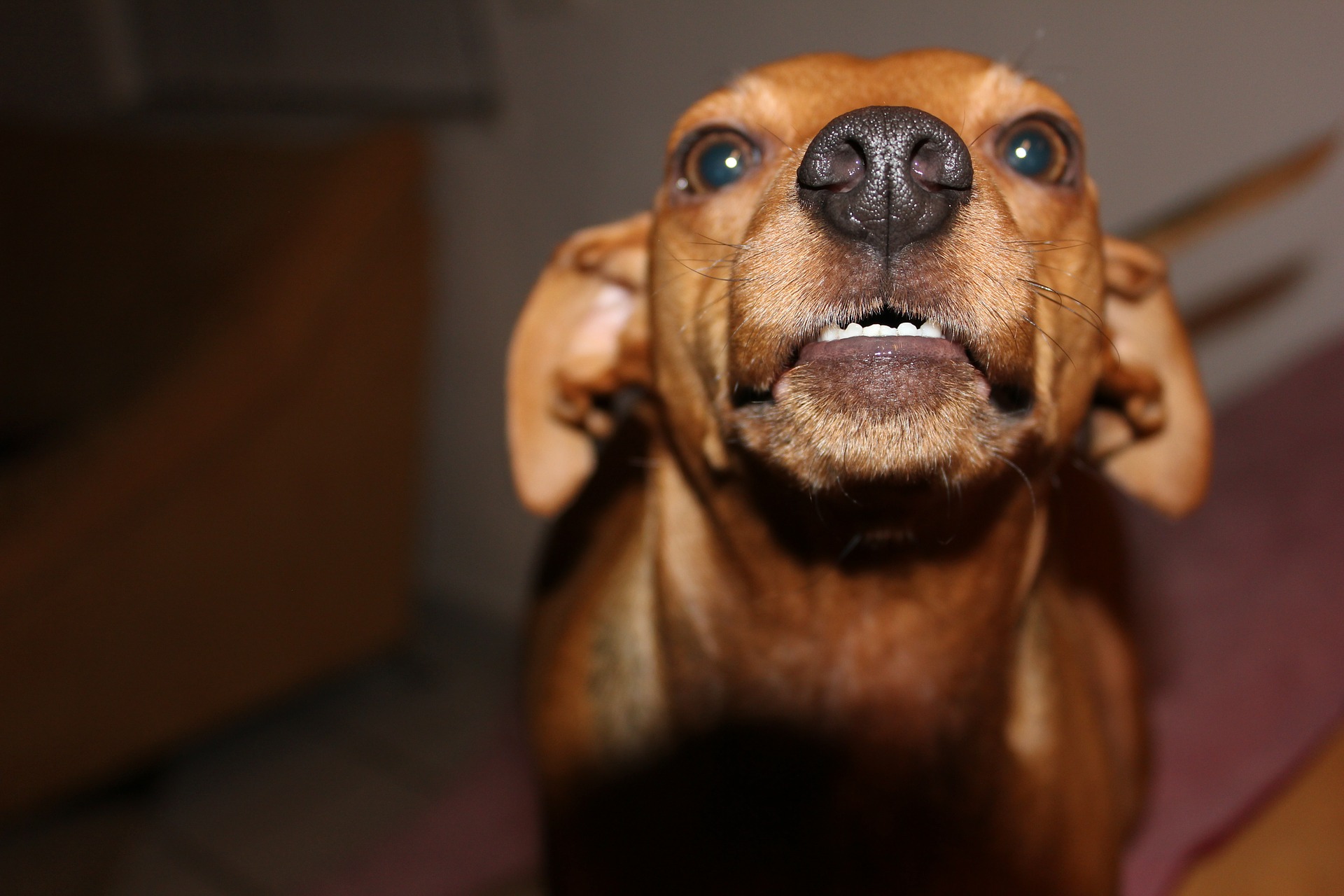
Create distractions
Although not a permanent fix for your dogs’ obsessive growling. A temporary solution for addressing the issue is by creating simple distractions to draw their attention away from likely victims of a growling fit.
Distractions come in many forms, so consider the following:
- Take a chew toy out with you when going for walks, and give it to your dog to hold when people approach.
- Change their focus by getting them to sit and wait for a treat while a stranger approaches. If the treats worth it, they’ll give their undivided attention to get it.
- Change your walking route to ensure you don’t pass close by to other people and their dogs. Or better still, change what time you take your dog out for a walk to when there are fewer people around (for instance, early morning or late evening.)
Using distractions is a sure-fire way to deal with their anxiety in the short term. However, it’s important to note that this won’t permanently fix the issue. So other measures still need to be considered.
Ignore the growling
While it’s understandable to try and quieten your dog when they’re growling at a passer-by, the best thing you can do (especially with attention-seeking dogs) is to simply ignore the behavior.
Why?
Because by doing the opposite (giving attention), there’s a chance you’re unknowingly giving your dog what they want. Which in turn will cause them to become repeat offenders of their persistent growling habit.
So whatever you do, refrain from scolding them or even raising your voice, as this will just give them more reason to keep doing what they’re doing.
If you’re out for a walk at the time of growling, make a conscious effort to shorten the leash and wait for the situation to pass.
Once they’ve finish growling, don’t give them a treat or a pat; just continue walking as normal.
Here’s where things get interesting…
The very next day, take 5-10 minutes to run through the 5 emotional control exercises before heading out for your daily walk.
Before you leave, make sure you have a bag of your dogs’ favorite treats to hand (you’ll need these a little later)
Anyway, go about your daily walk as you normally would and see how your dog responds in the presence of strangers.
If the growling is a no-go, make sure you immediately reward the behavior with a treat and positive praise.
The idea here is to slowly replace negative associations (being ignored) with new positive associations (treats and praise) when your dog resists the urge to growl.
It can take several attempts for them to start to get the message. But with repeated practice, you should begin to notice a marked improvement in your dogs’ behavior for the better.
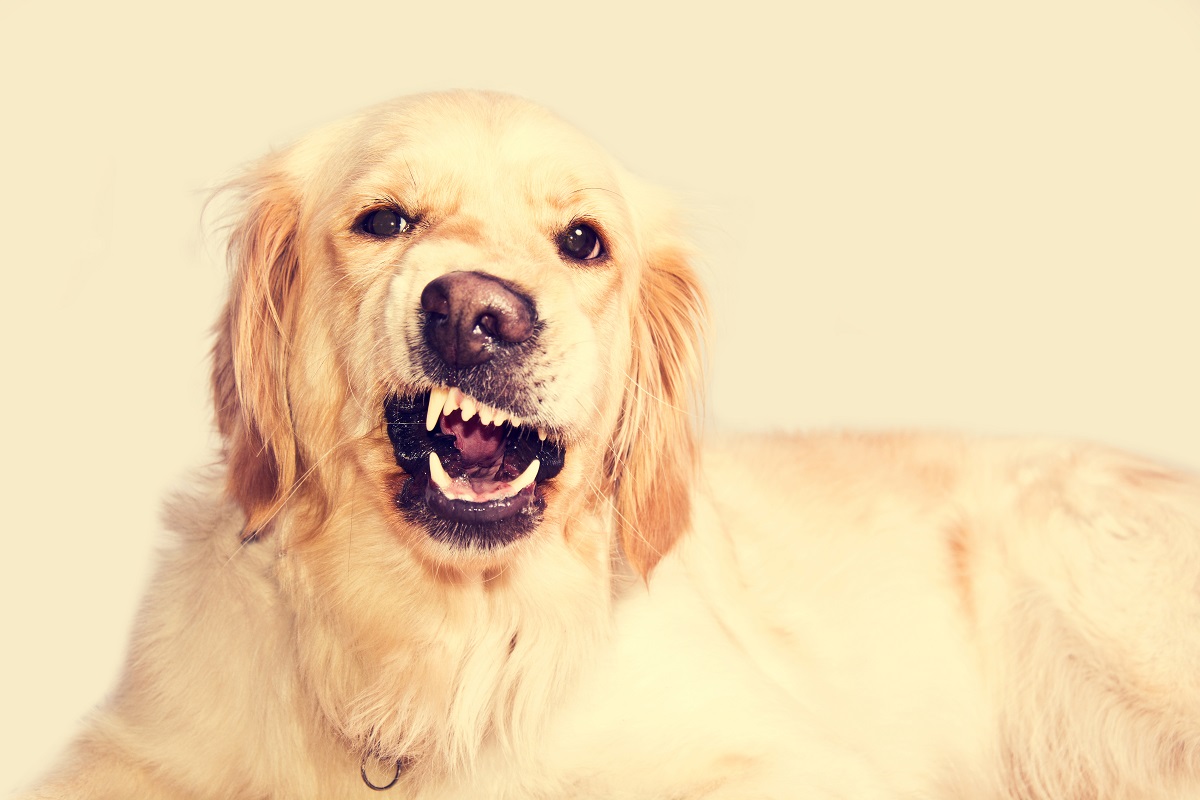
Wrapping Things Up
With issues like growling, I know firsthand how incredibly frustrating it can be to witness your dog turn from a boundless ball of fun into an aggressive nightmare.
And while there can be many reasons for this random act, it’s still in the best interest of both you and your dog to get it under control before any real damage is done.
Again, all dogs growl for different reasons, so it’s important to keep a close eye out for any signs of genuine aggression so you can quickly put in place an effective plan to address it.
If you do, you’ll quickly it’s very possible to eliminate obsessive and unnecessary growling a lot sooner than you think.
